Rocks in Jeju
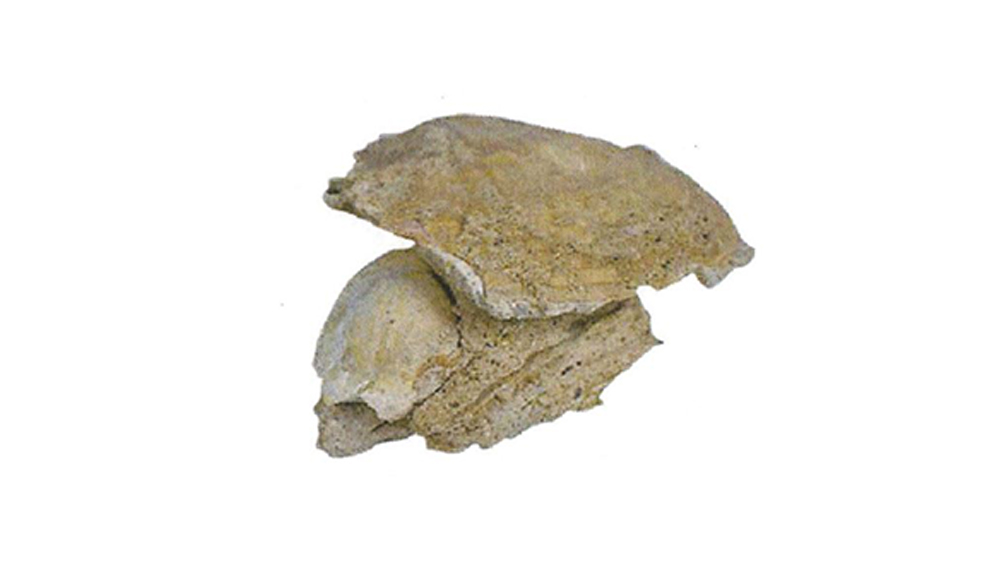
Seogwipo Layer Shellfish Fossil
- Seogwipo layer can mostly be found in underground of middle and west parts of Jeju, a part of which are exposed on the ground surface for 1.5km along Seogwipo’s coastal cliff.
- Seogwipo layer is a sedimentary layer of organisms from sea or land formed in the early stage of the fourth period of the Cenozoic Era. The layer has pyroclastic materials created by hydro volcanic activities in the early stage of Jeju’s formation and fossils of shellfish and other marine organisms as well as other evidence of living organisms that provide information on past environmental conditions.
- This is part of a shellfish fossil layer that contains a fossil of Mizuhopecten tokyoensis hokurikuensis.
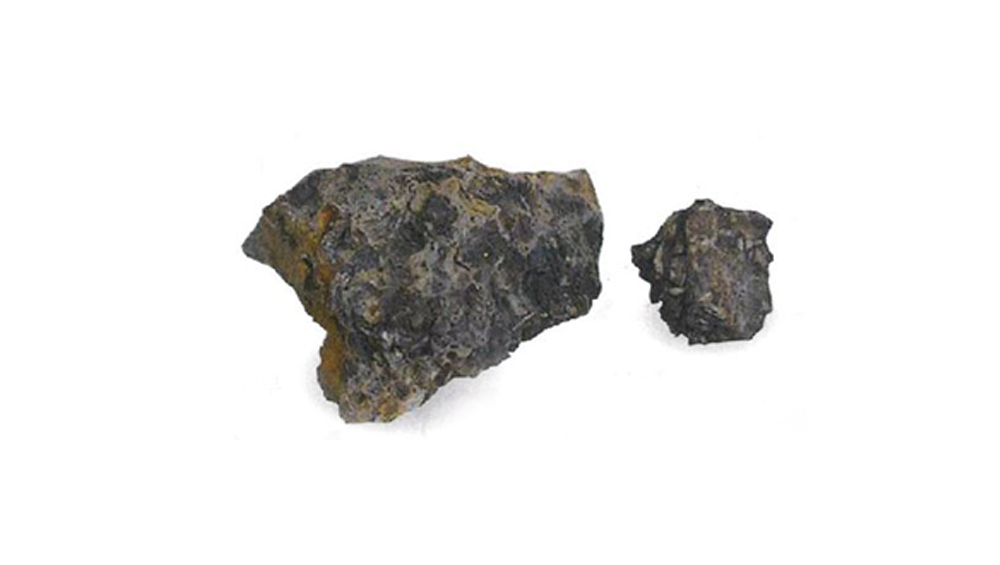
Thermowood
- Thermowood is created when lava or pyroclastic matters flow into forests and burn the trees and plants.
- Thermowood is mostly comprised of carbon, and therefore radiocarbon dating thermowood is an important way to determine when a volcano erupted.
- One of the best places to see thermowood is Mt. Baekdu, and specimen is collected from Byeongak Oreum in Seogwipo, Jeju.
- It is from the bottom of the top layer of the three main lava flow units of basaltic trachyandesite aa lava erupted from Byeongak Oreum. The radiocarbon dating result shows that it could be as old as 5,000 years.
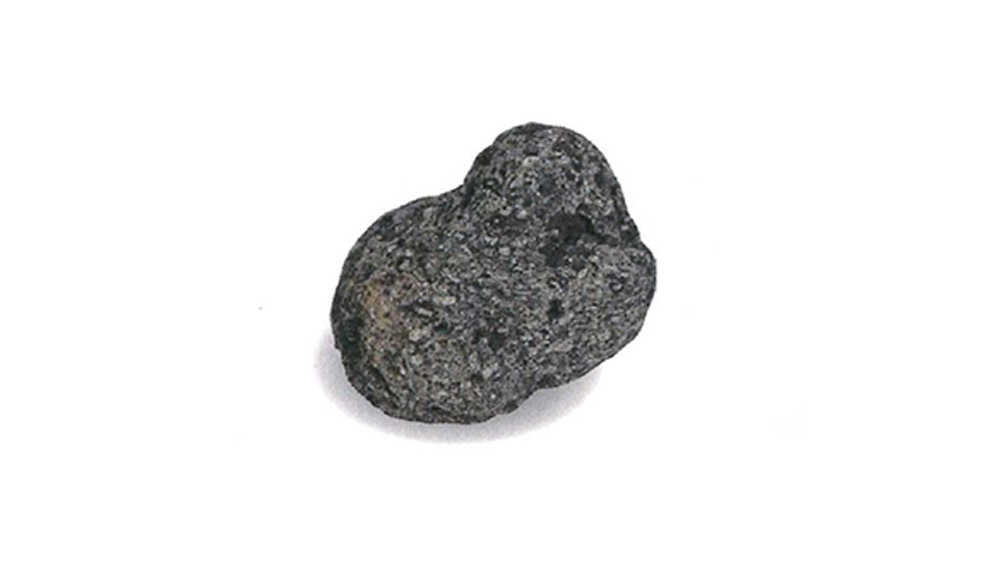
Feldspar Basalt
- Feldspar basalt is found in Jeju’s drilling cores or an outcrop, and it’s mostly comprised of white plagioclase phenocrysts.
- Feldspars in an acicular shape are called acicular feldspar basalt.
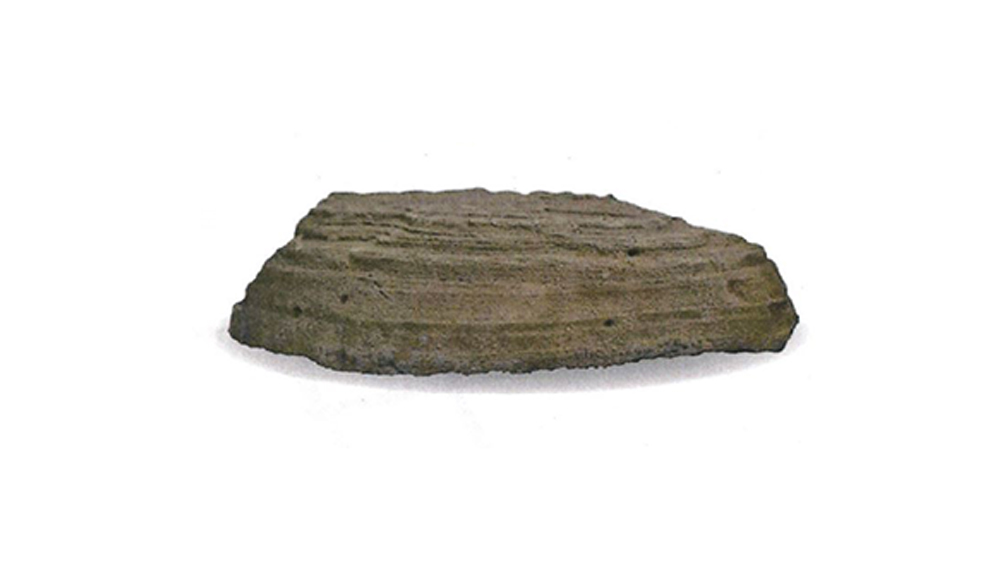
Tuff
- Mt. Songak is a complex volcano consisting of a tuff ring, cinder cone, and lava ponds and has layers of tuff, cinder layer 1, trachybasalt, and cinder layer 2 from the bottom.
- The tuff ring in Mt. Songak is formed through hydro volcanic eruption, and up to 80-meter-thick volcanic tuff is in within 3 kilometer range from the crater.
- As one of the strongest types of volcanic eruption, hydro volcanic eruption occurs when magma meets groundwater or surface water. Pyroclastic matters from the eruption flows and accumulates at a fast pace, forming a tuff ring.
- Mt. Songak’s tuff ring has a sedimentary structure of bedding planes, wave bedding, megaripples, stratification, and U-shaped river channel structures.
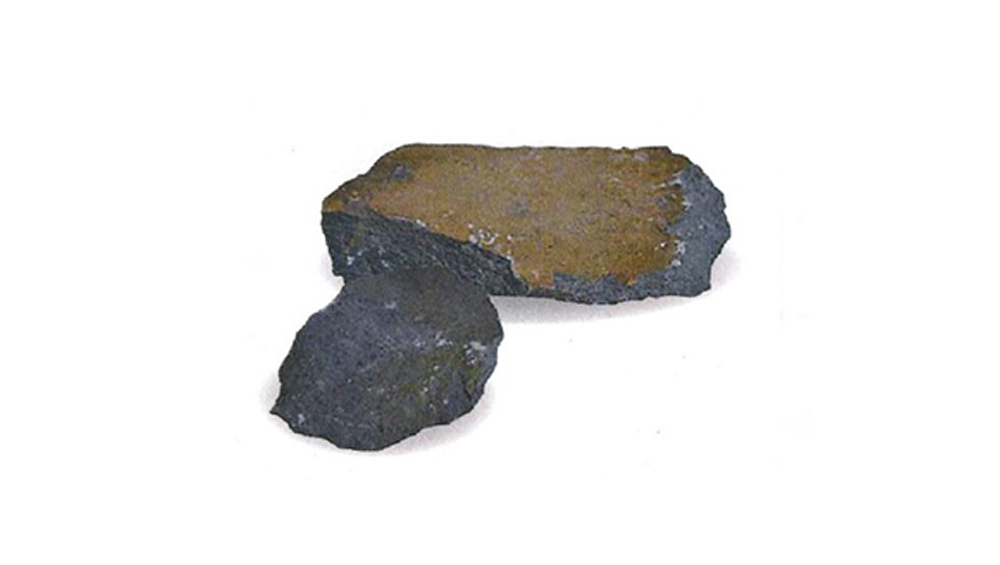
Kaersutite Trachybasalt
- Trachybasaltic aa lava that flew through tuff layers can be found in Byeoldobong and Sarabong coasts near Jeju Port.
- This lava is named Biseokgeori trachybasalt (hawaiite) after an area nearby. One of its distinct features is black kaersutite and white plagioclase combined as phenocrysts.
- Except for the Baengnokdam-type trachyte, kaersutites are rarely found. Byeoldobong and Sarabong coasts are some of the very few places where you can see kaersutite.
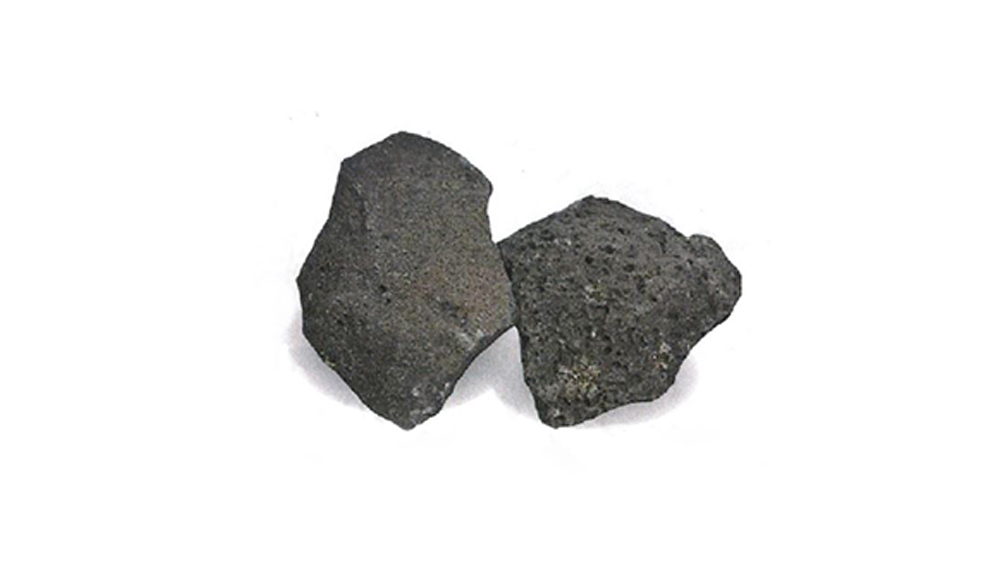
Tholeiitic Andesite
- Marado is an island of repeated layers of tholeiitic andesite lava that are less than 1-meter-thick.
- Repeated layers are one of the distinctive features of Pahoehoe lava, which has high porosity as it has more vesicles on the outside than the inside of the lava layer.
- Tholeiitic andesite has a glomeroporphyritic texture, and black orthopyroxene phenocryst surrounded by white plagioclase phenocrysts gives it a petal-like shape on the surface.
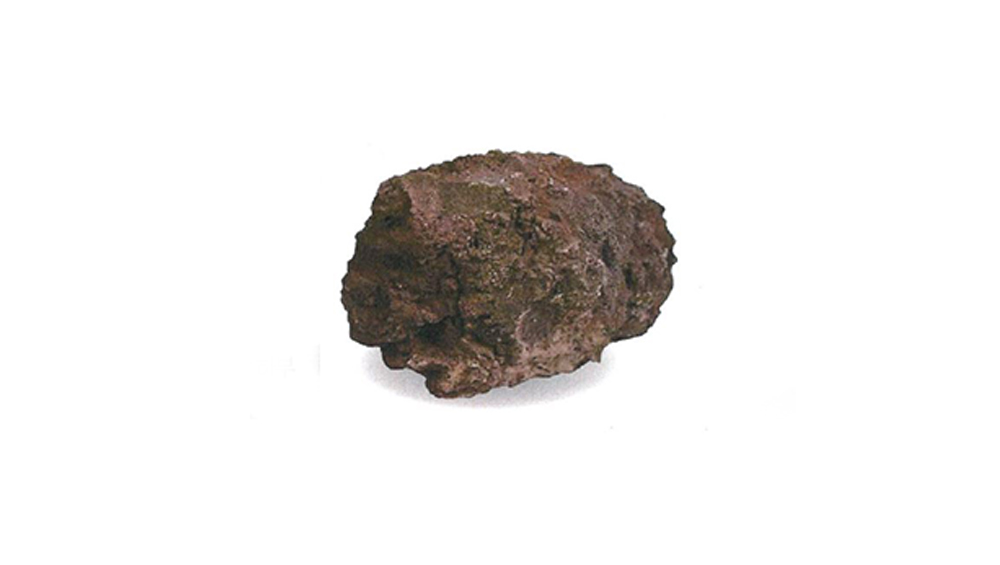
Spatter
- Seopjikoji’s menhir cinder cone shows the structure of inside a volcano along the coastal cliff as most of the cone is eroded around the crater. It’s one of the main spots where you can see the formation of stromboli volcanoes clearly.
- Spatter refers to blobs of hot and unconsolidated lava thrown into the air. It‘s commonly found in the base of the center of a menhir cinder cone, twisted and pressed. Spatter is combined with volcanic bombs and forms agglomerates.
- A spatter is 20-centimeter-large in diameter on average, and looks reddish brown on the surface because of oxidation but the color gradually turns dark gray on the inside. It has a porosity of approximately 10% and shows a fluidic structure.
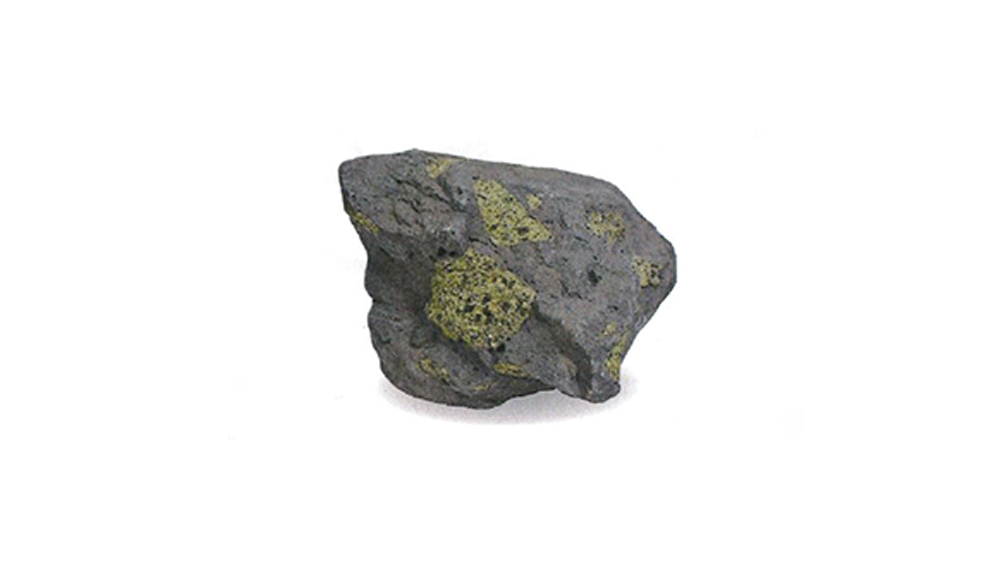
Mantle Peridotite Xenolith
- Mantles are found when it’s exposed to the earth’s surface because of the movement of Earth’s tectonic plates or when it’s enveloped in magma.
- Mantle xenoliths are mainly discovered in Baengnyeongdo Island, Ganseong area, Asan-Pyeongtaek, Boeun, and Jeju.
- Sansan-ri in the eastern part of Jeju has mantle xenoliths large in variety and amount.
- Mantle xenoliths found in Sansan-ri usually consist of olivines, orthopyroxenes, clinopyroxenes, and spinels. They are a peridotite, a category that lherzolite and harzburgite fall under.
- Lava that envelopes and carries mantle rock is alkali basalt, and K-Ar dating indicates the eruption may have taken place around 100,000 years ago.
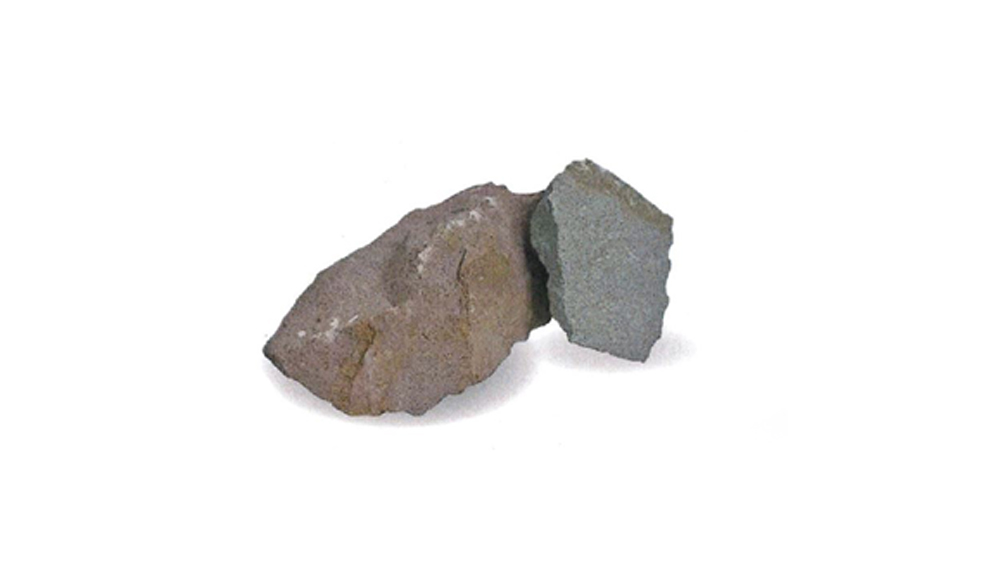
Trachyte
- Unlike basaltic lava, trachytic lava is highly viscous and therefore cannot flow great distances but forms a lava dome around the crater.
- Most lava domes in Jeju are scattered along the coastline in the south of the island or around Hallasan Mountain crater. The time of the eruption, location of the domes, and their rock types determine whether they are Sanbangsan-type or Baengnokdam-type.
- Sanbangsan trachytes’ Ar/Ar age is 802± 5 Ka, meaning the eruption occurred around 800,000 years ago. The rocks are dark gray but the color is pale pink or gray on weathered surfaces. They are non-phenocrystic aphanite that little phenocrysts is visible with naked eyes.
Experience microscope
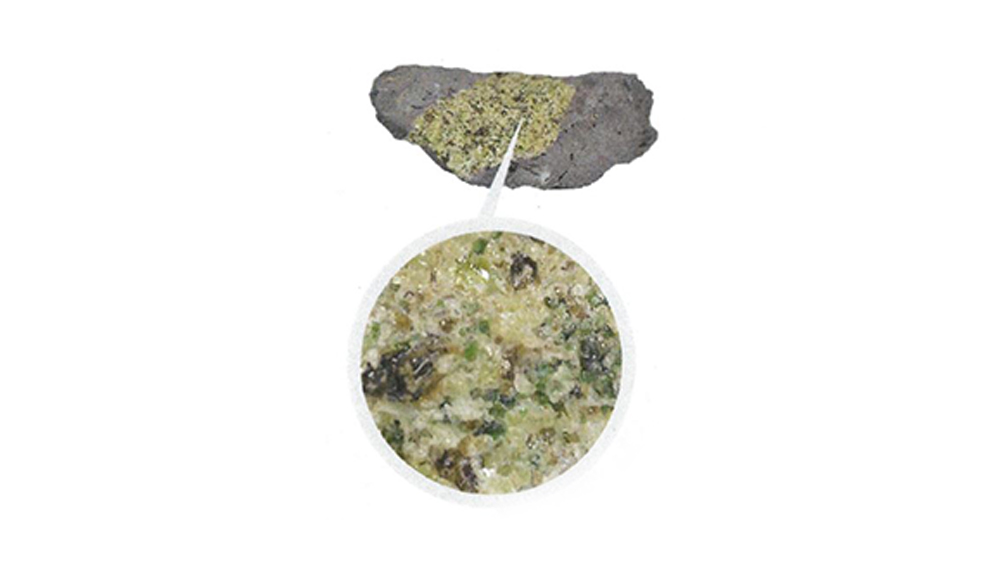
Mantle Peridotite
Let’s find out about the mantle beneath Jeju that flew to the earth’s surface about 100,000 years ago when alkali basaltic lava erupted.
Things to see
a. Structure
b. Formation I. Olivine, II. Orthopyroxene, III. Clinopyroxene, IV. Spinel
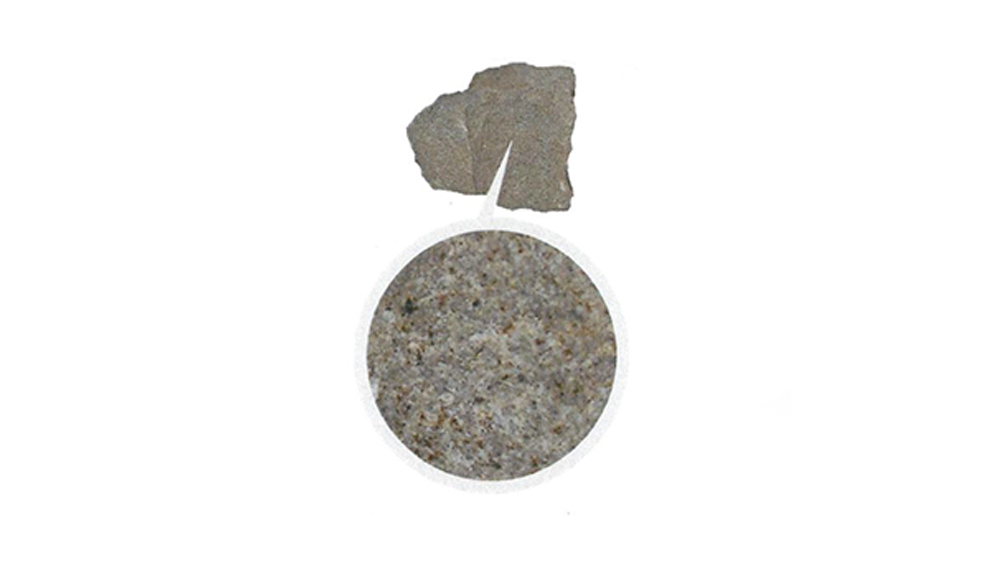
Trachyte
Let’s learn about rocks in Sanbangsan that were formed by magma eruption around 800,000 years ago.
Things to see
a. Difference in color with basalt

Tholeiitic Andesite
Let’s discover the characteristics of pahoehoe lava that account for most of the composition of Marado Island.
Things to see
a. Porosity
b. Formation I. Plagioclase, II. Orthopyroxene
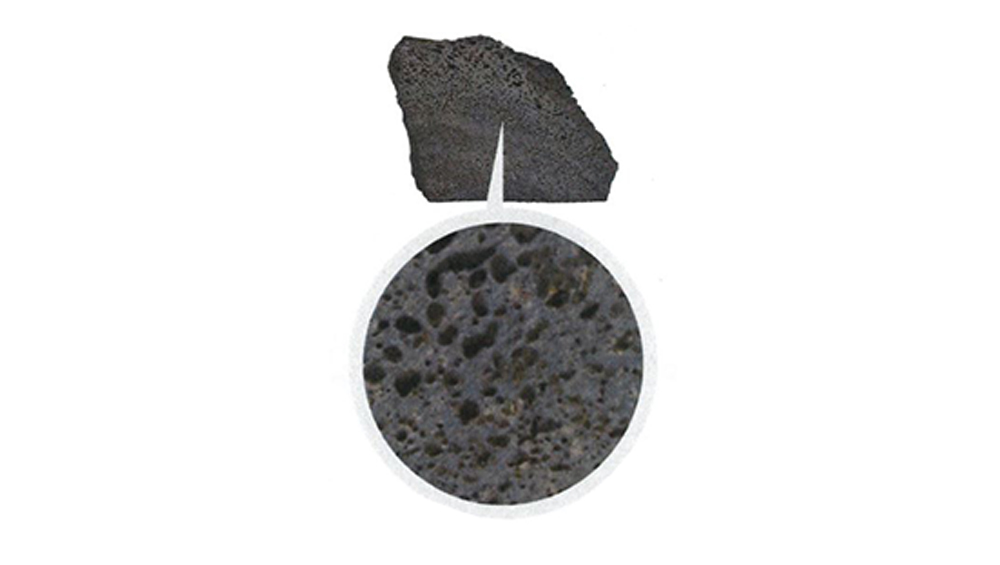
Vesicular Basalt
Let’s find out about vesicular basalt created during the volcanic activity that formed Geomun Oreum.
Things to see
a. Color
b. Shape of vesicles
c. I.Olivine
Rocks in Hawaii
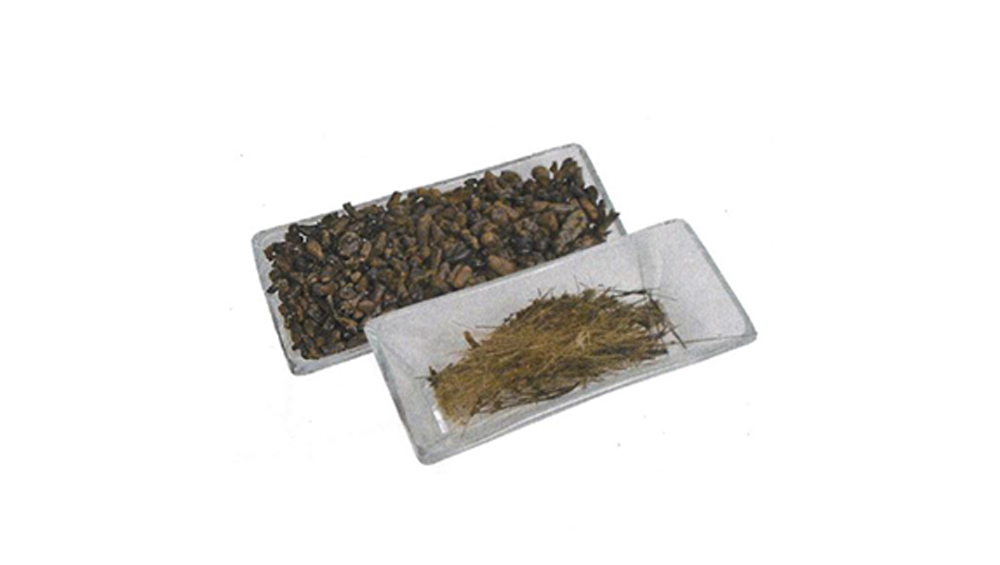
Pele’s Hair and Tears
- When molten lava spews into the air from a crater, it forms pieces of volcanic glass resembling a sphere or a tear drop and thin volcanic glass fiber like hair.
- Pele is the goddess of volcanoes of the Hawaiian Islands.
- The tear drop-like globule is black and usually has threads of volcanic glass fiber attached on one end.
- The volcanic glass fiber is generally less than 0.5mm, up to 2mm-thick, and in the color of gold or yellow gold.
- They sometimes fly for a few kilometers.
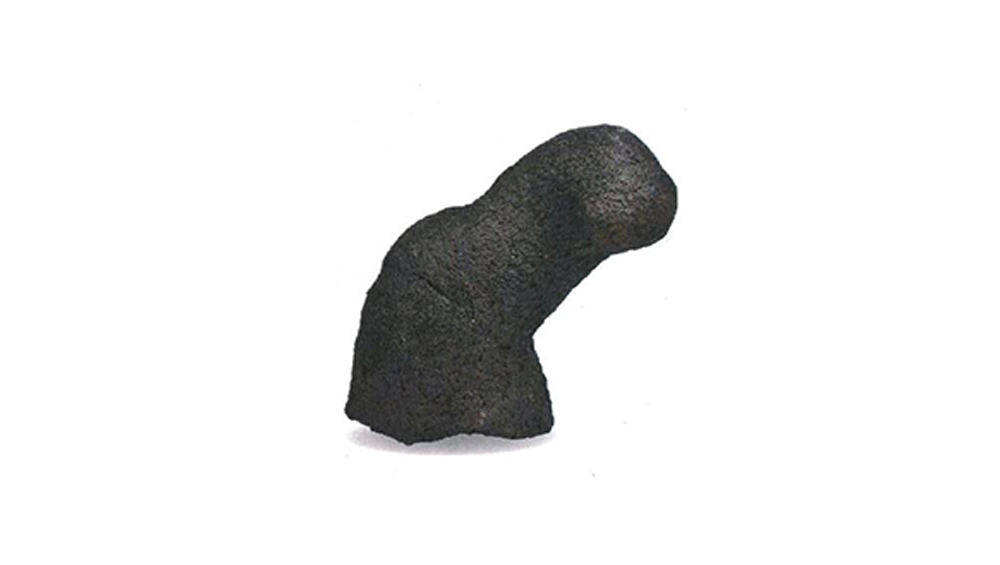
Lava Toe
- A lava toe is formed when pahoehoe lava slowly flows on a flat surface or a gentle slope, advancing in multiple protrusions or a few of them combining back together.
- A lava toe is named after its toe-like shape of protrusions of flowing lava.
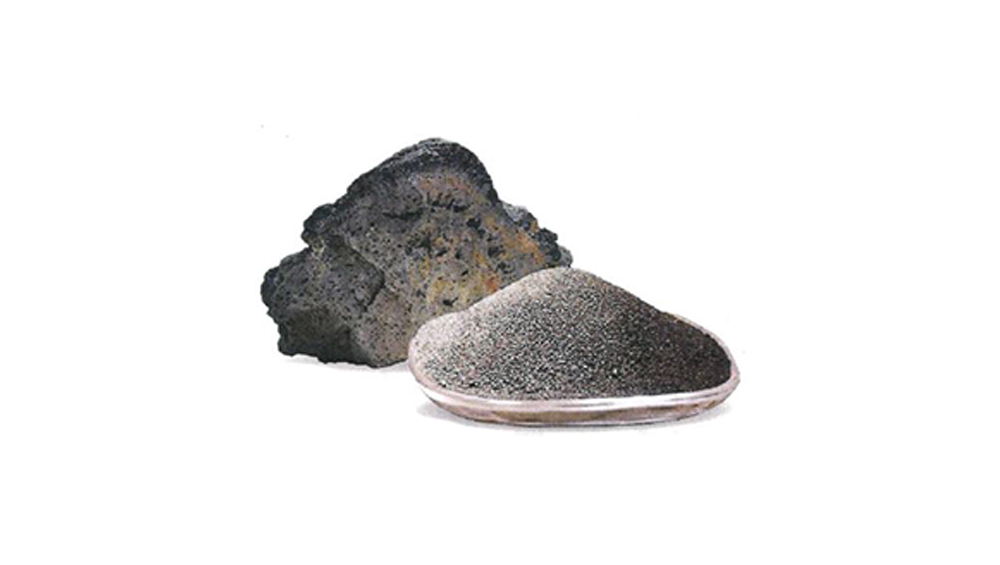
Volcanic Glass and Black Sand
- Volcanic glass is formed when hot lava flows into water (sea, lake, damp land) and exposed to a sudden change in temperature, resulting in magma surface rapidly cooling and being covered in black glass-like matter.
- An atmospheric explosion breaks down the glass into smaller rocks or sand, and further erosion by waves turns the glass pieces into black sand.
- Kaimu black sand beach is created after a volcanic eruption in 1990.
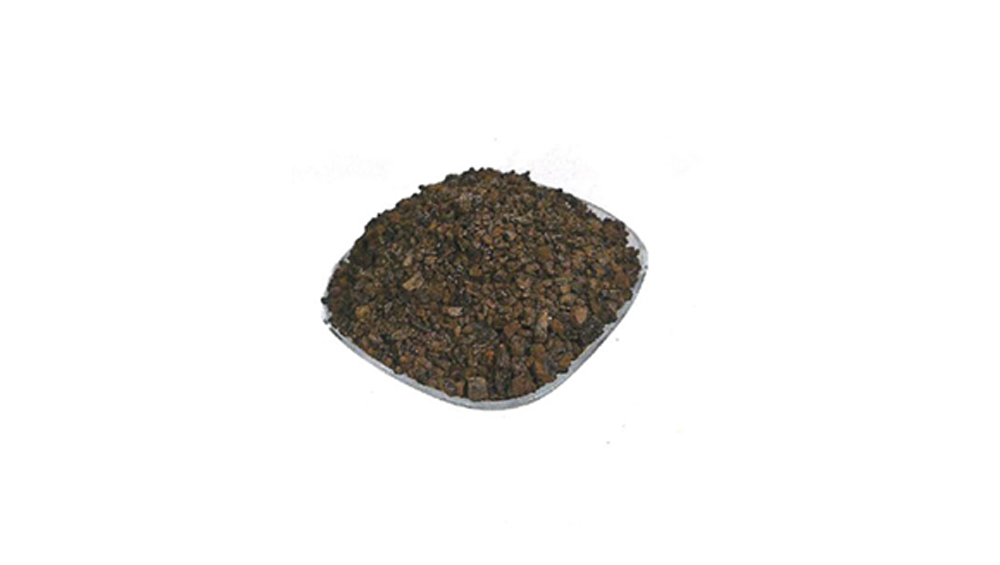
Lapilli
- Lava droplets formed when hot lava spews into the air during volcanic activity and 2 to 64 millimeters in diameter.
- Examples of lapilli include scoria, reticulite, and Pele’s hair.
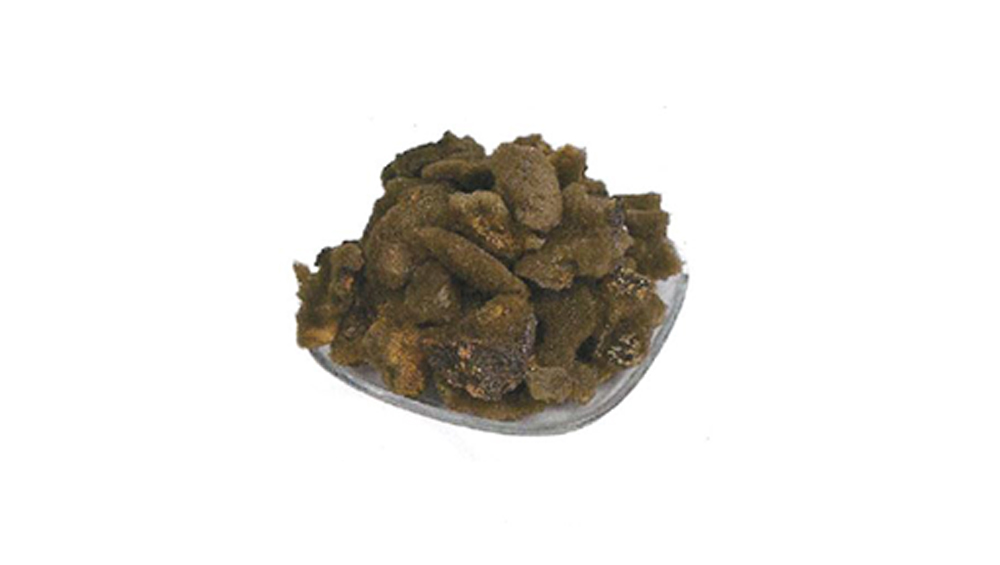
Reticulite
- When boiling magma is sprayed into the air, gas bubbles in the lava burst and form a highly porous and sponge-like structure that resembles a honeycomb network of glass fiber.
- Reticulite is lighter than pumice but it’s different from pumice in that it does not float on water as the connected vesicles are open.
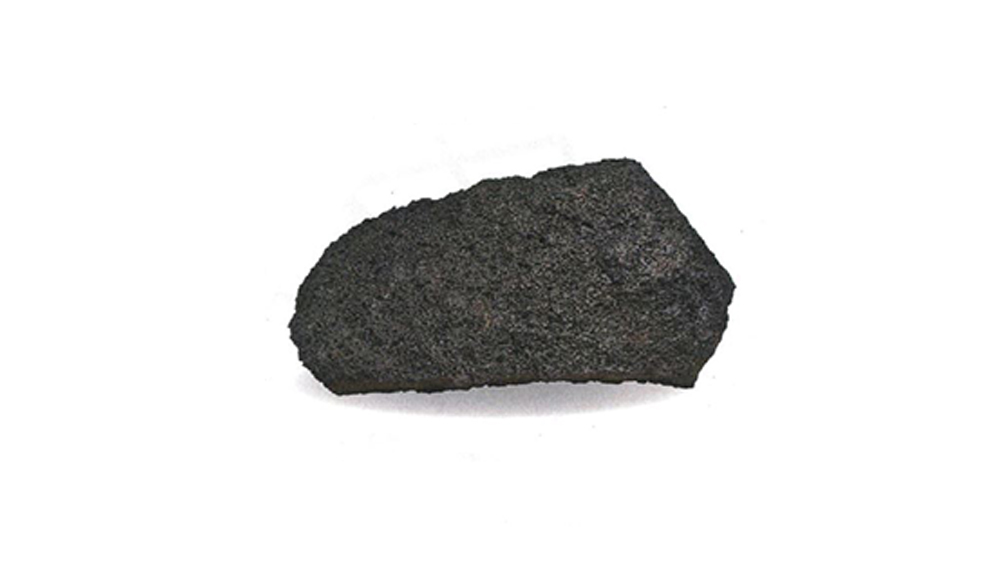
Vesicular Lava
- Vesicles are small holes created when gas bubbles in scorching hot basaltic magma escape into the air.
- 기Vesicles are mostly on the surface of magma and either round or wrinkled depending on the viscosity of the lava.
- When magma comes into contact with air, its surface rapidly cools and forms a thin layer of volcanic glass.
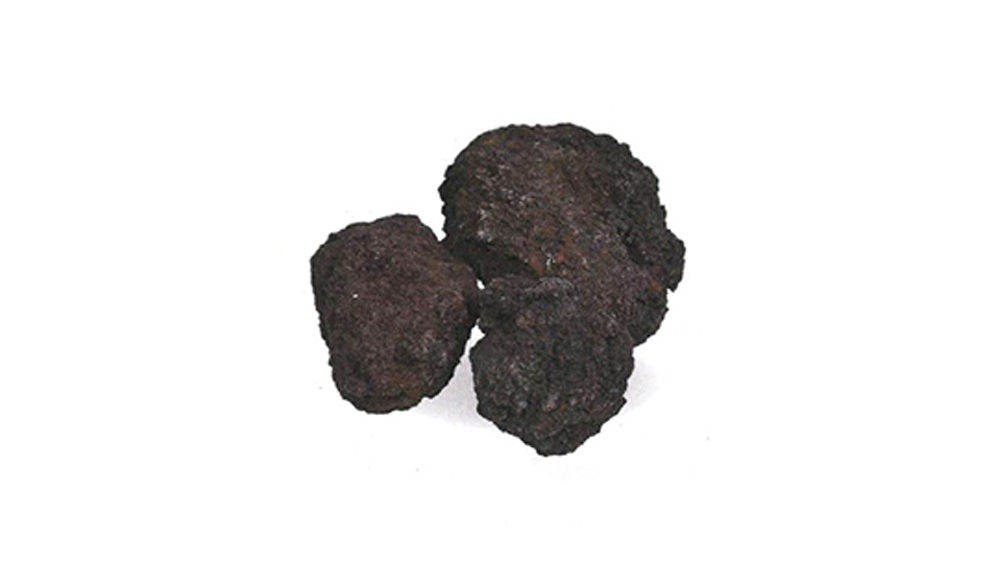
Aa Lava
- Aa lava has a rough surface of volcanic rock fragments called clinkers, which are lava blocks quickly cooled in the air.
- When lava flows, sometimes clinkers hit each other, erode, and turn into a rounder shape named lava ball. Lava balls combined together are called accretionary lava ball.
Jeju’s Drilling Core
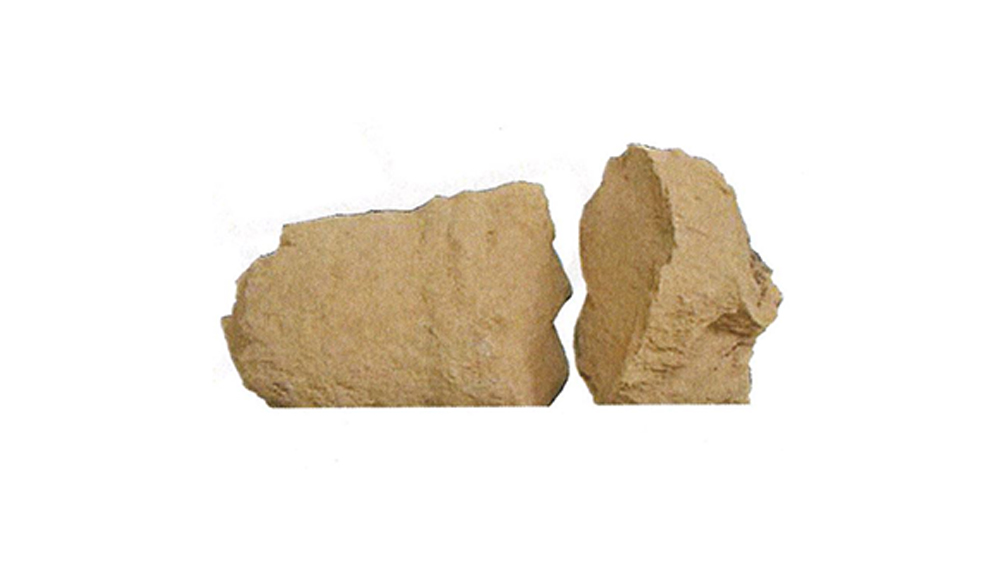
Clayey Sediments
- Clayey sediment mostly consists of clay in the color of brown, just like topsoil, and sedimentary layers with lava fragments in various sizes are in between lava layers.
- Clayey sediment is referred to as “old soil” in that it’s been there for a very long time, but it’s technically terrigenous sediment in that there are sedimentary layers depending on its location.
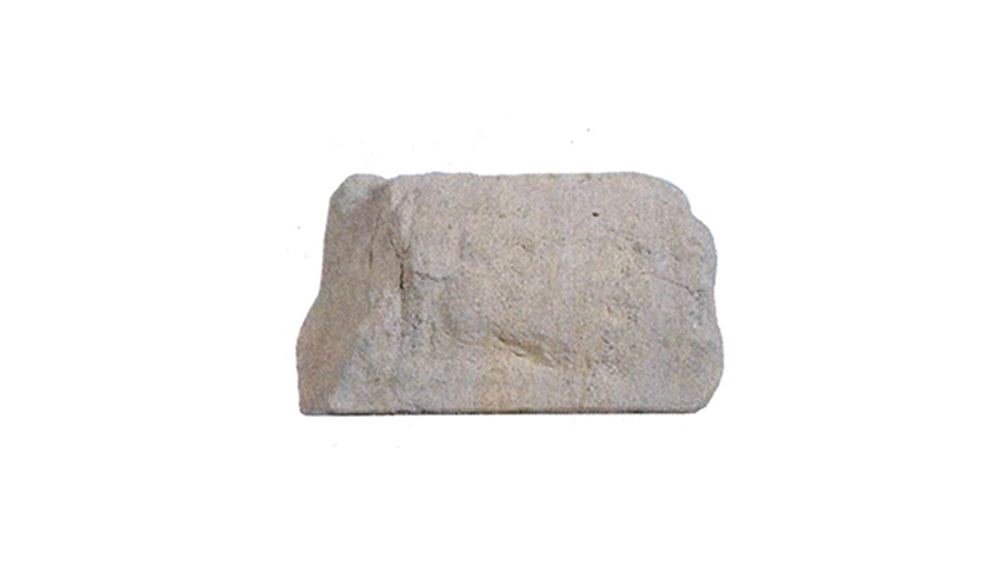
Shell Sandstone
- Shell sandstone is generally made up of clay or sand. It’s solidified compound of accumulated volcanic ash and pieces of shells, but it easily breaks down when touched.
- It’s from beaches or dunes from the past and the sedimentary layers are created in a completely different time from Seogwipo layers.
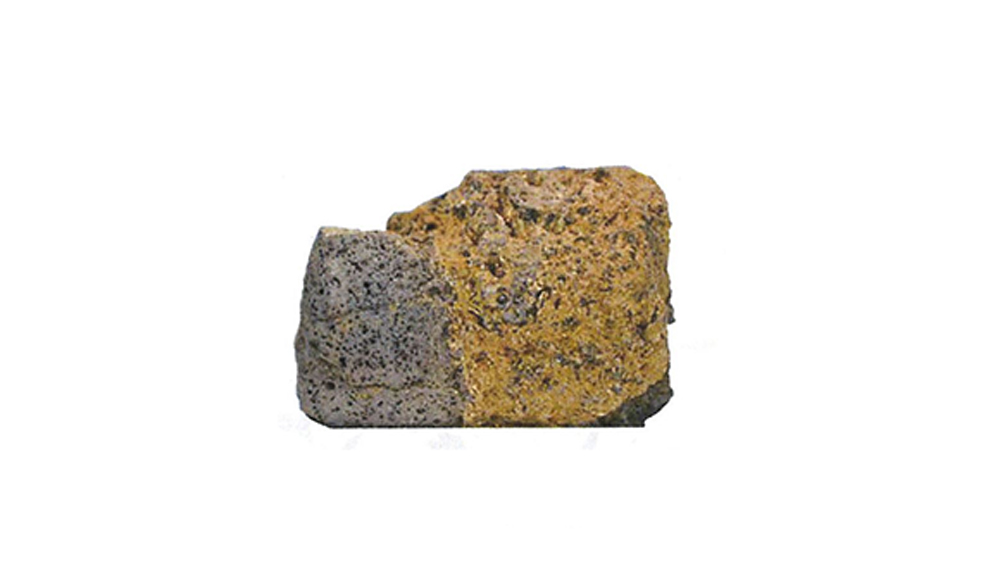
Clastic Rocks
- Clastic rocks are formed when hot lava flows into water, quickly chills and breaks down into pieces of volcanic glass.
- The black volcanic glass gradually turns into clayey mineral over time, and is sometimes combined with sediments in the water
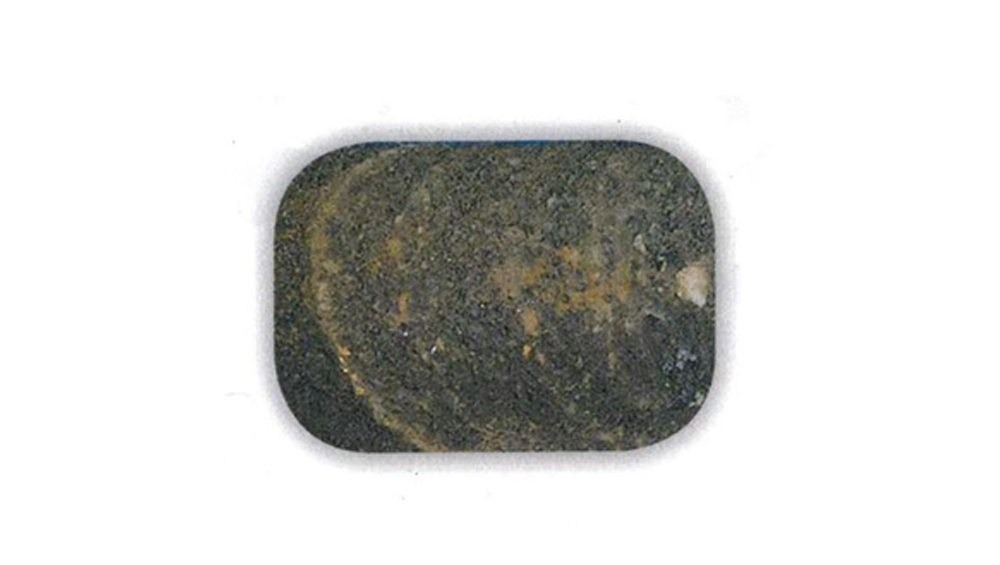
Volcanic Pyroclastic Layer
- Volcanic ejecta that forms Seogwipo layer is a valuable clue to volcanic activity in the early stage of Jeju’s formation.
- Pyroclastic matters are formed through hydro volcanic activity of hot magma from underground meeting water which resulted in volcanic eruption. They were accumulated and created hydro volcanoes, which repeatedly accumulated and traveled, ultimately forming Seogwipo layer.
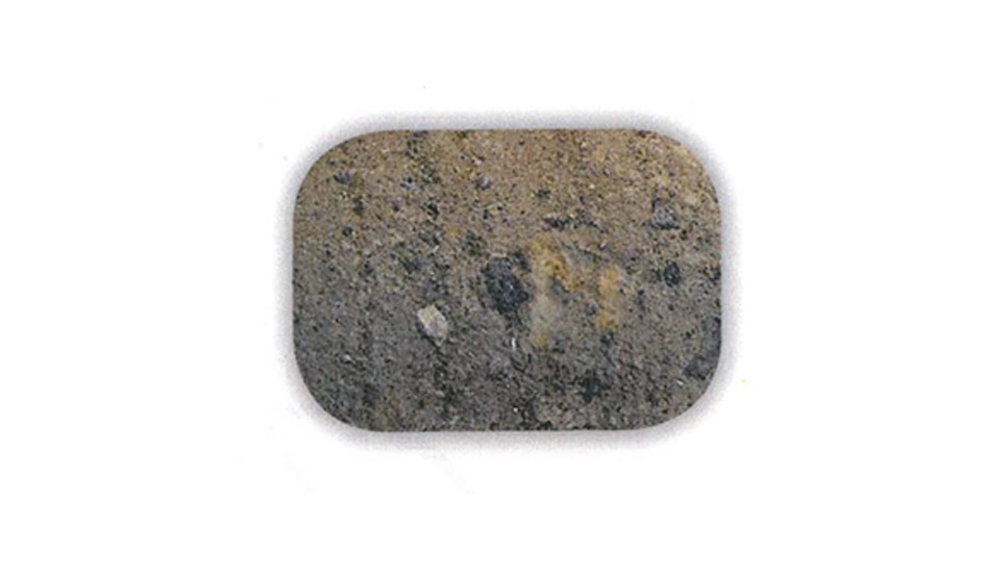
Tuff
- Tuff is sedimentary rock with volcanic ash, formed through volcanic eruptions.
- There are over 10 tuff rocks in Jeju‘s coastal areas and inland, mostly found in Mt. Songak, Suwolbong, and Seongsan Ilchulbong.
- Tuff rocks from Jeju’s drilling core indicate that Jeju was formed through countless volcanic eruptions.
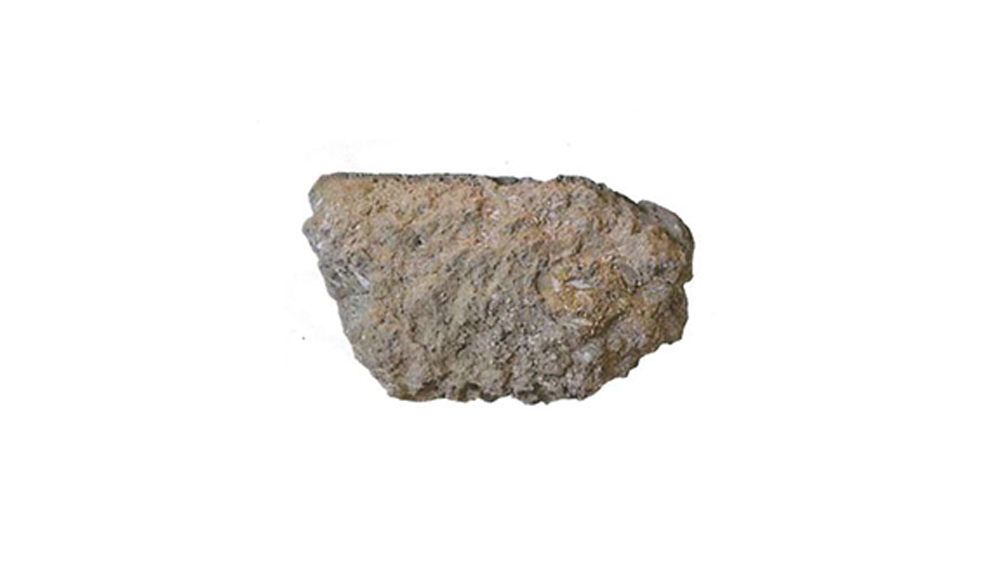
Seogwipo Layer Shellfish Fossil
- Seogwipo layer is found underground across Jeju, including marker land near Seogwipo Port, and the depth, thickness, and rock facies of the layer vary depending on the area.
- The layer mostly consists of clay rocks but also has many shellfish fossils.
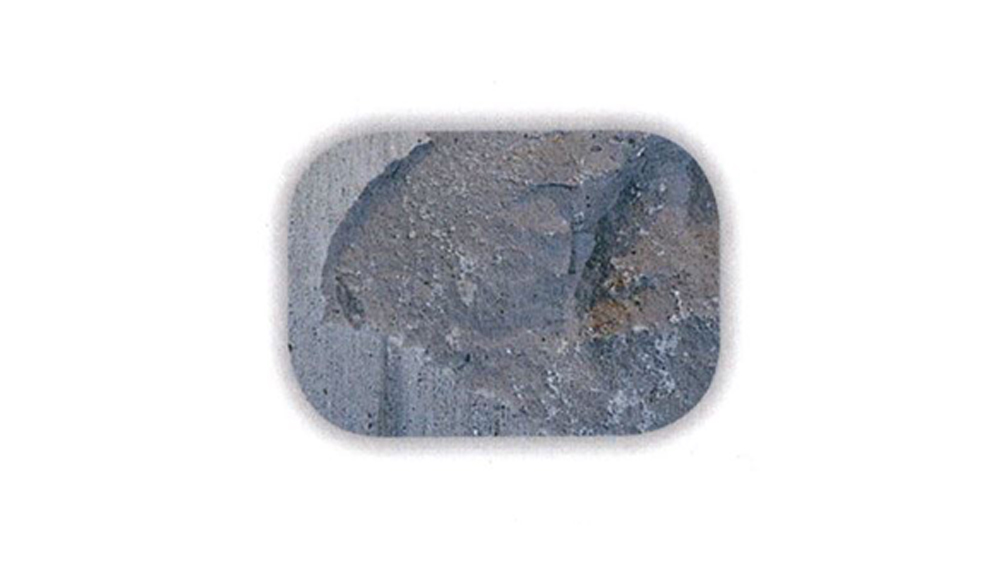
Olivine Pyroxene Basalt
- Jeju‘s underground has accumulated lava layers that are a few to dozens of meters in thickness that can flow on the earth’s surface for a long time.
- Lava flow is categorized by determining its porosity, shape of vesicles, types and presence of mineral crystals.
- Crystals that are visible with naked eyes are called phenocryst minerals and crystals that are not are called groundmass. The rock type is determined by the types and amount of phenocryst.
- This part of the core has more black clinopyroxenes than yellow olivines, hence the name “olivine pyroxene basalt.” The rock is very dense with little vesicle.
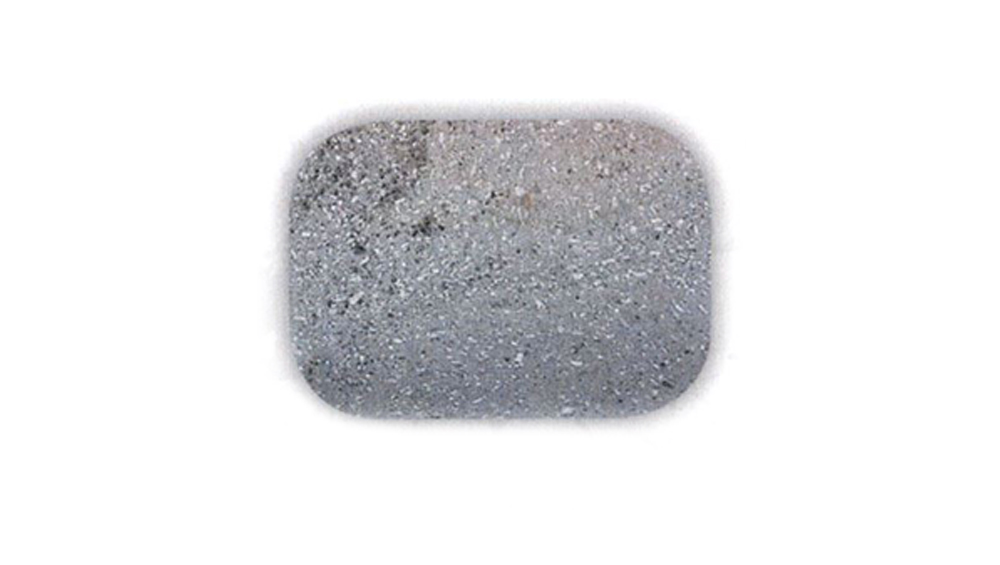
Pyroxene Feldspar Basalt
- It’s called pyroxene feldspar basalt because it has more white plagioclase than black clinopyroxene. The rock is very dense with little vesicle.
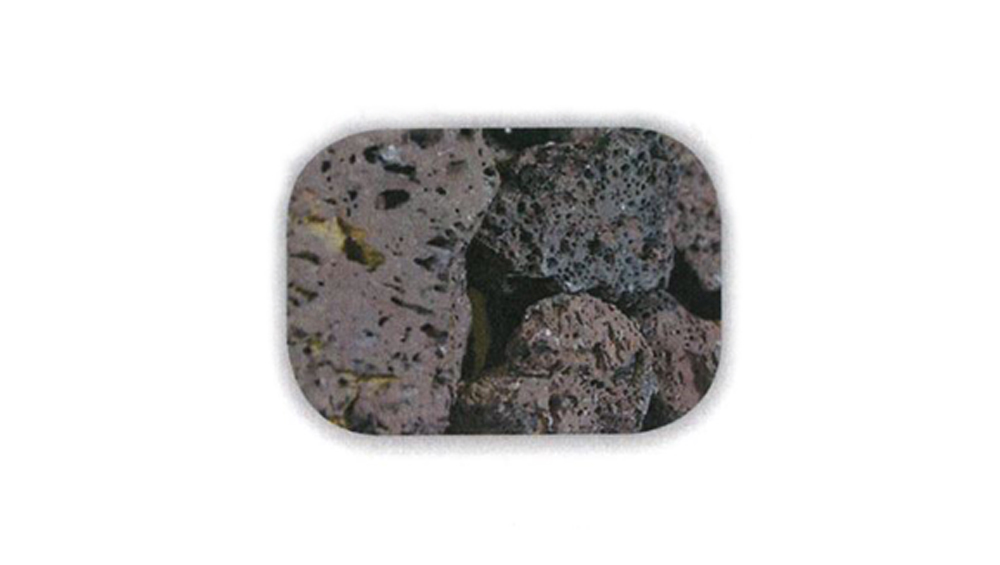
Vesicular Basalt
- Vesicular basalt is a type of porous pahoehoe lava fragments. The surface is covered with viscous lava glass, which indicates the surface cooled faster than beneath the surface.
- It mostly consists of white plagioclase, and its surface oxidized in red shows that the crack was used for groundwater’s travel route.
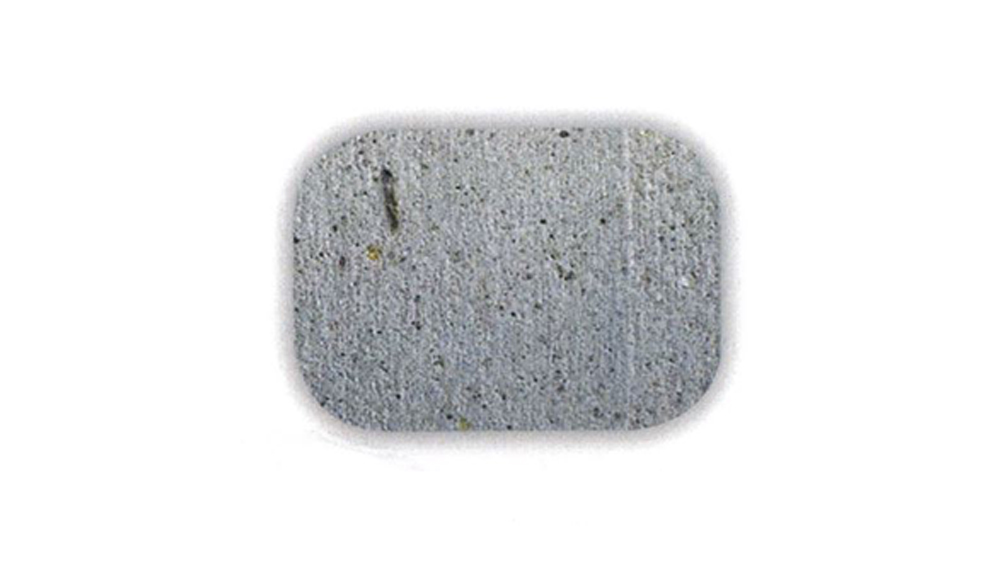
Pyroxene Olivine Basalt
- It’s called pyroxene olivine basalt because it has more yellow olivine than black clinopyroxene.
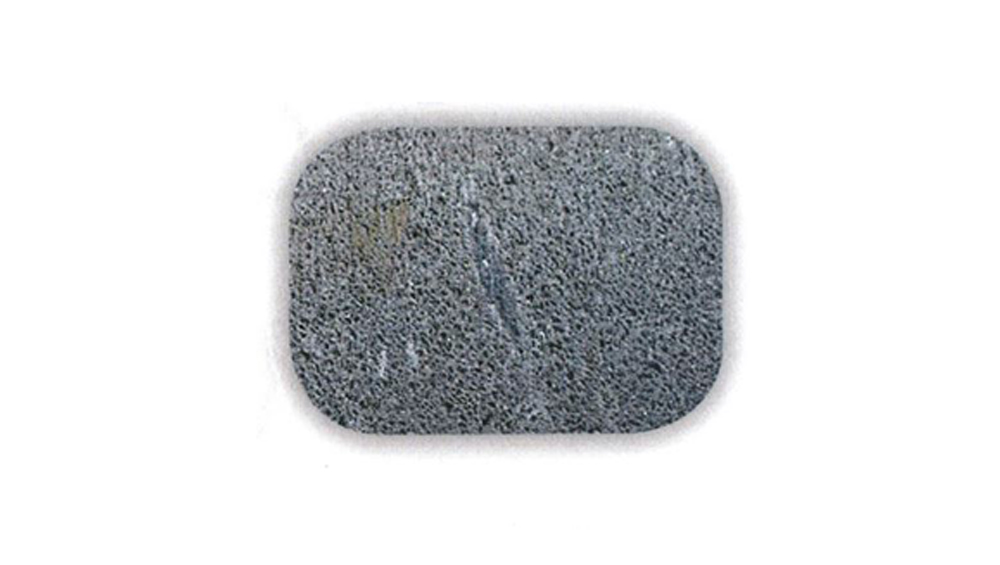
Acicular Feldspar Olivine Basalt
- Acicular olivine basalt is highly porous pahoehoe lava rock with a sponge-like network of tiny vesicles.
- It’s categorized as acicular feldspar olivine basalt as basalt crystals are non-phenocrysts and plagioclase crystals are thin and sharp.
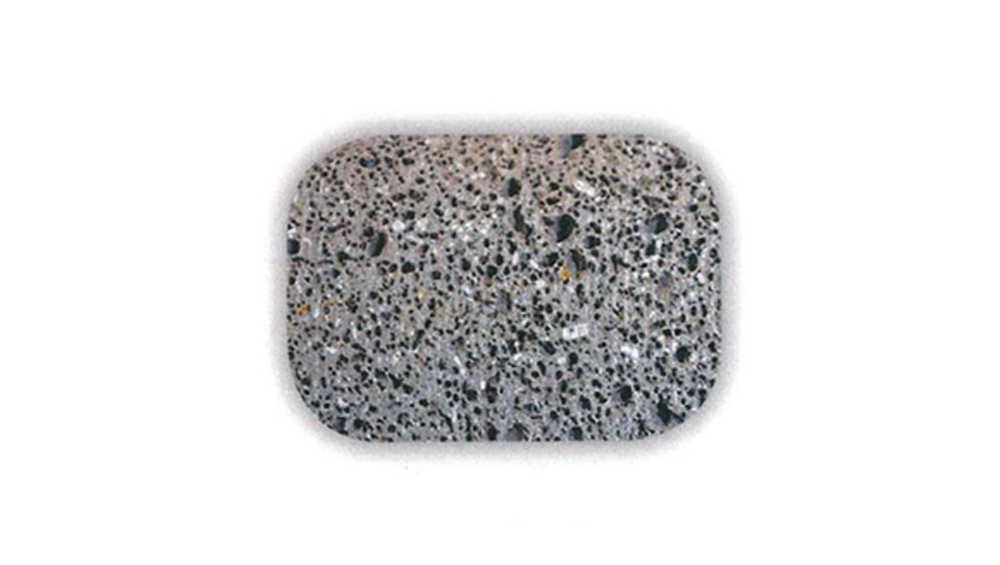
Vesicular Feldspar Basalt
- Porous pahoehoe lava fragments with white plagioclase rocks as the main phenocryst.
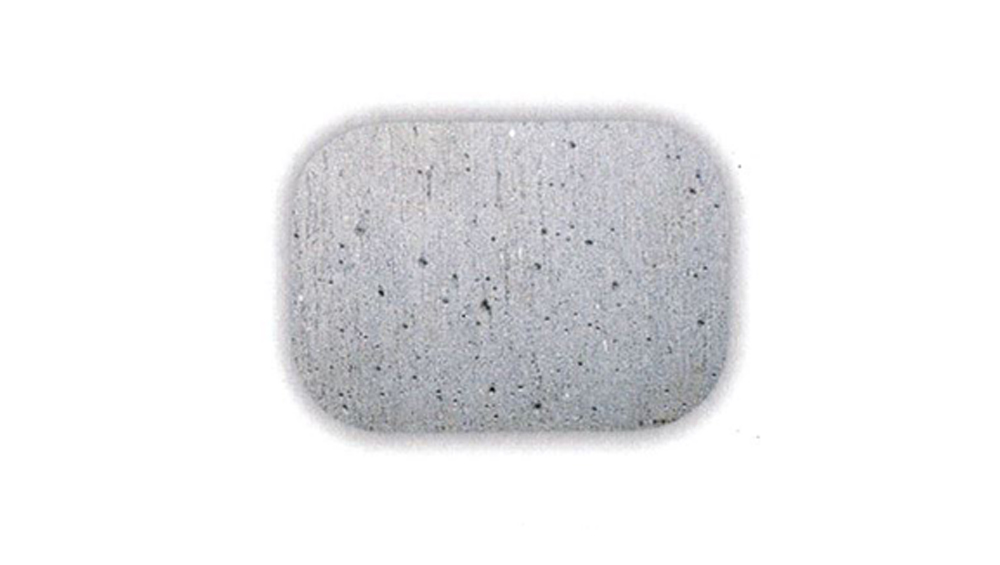
Non-phenocrystic Basalt
- Non-phenocrystic basalt with rarely found plagioclase phenocryst crystals shows dense texture and a few plagioclase phenocrysts at times, and it’s sometimes mistakenly categorized as trachyte because of its non-phenocrystic structure.
- It’s relatively dark compared to trachyte in light gray or pink, and the color sets it apart from trachyte.
- Porous pahoehoe lava fragments with white plagioclase rocks as the main phenocryst.


 EN
EN

